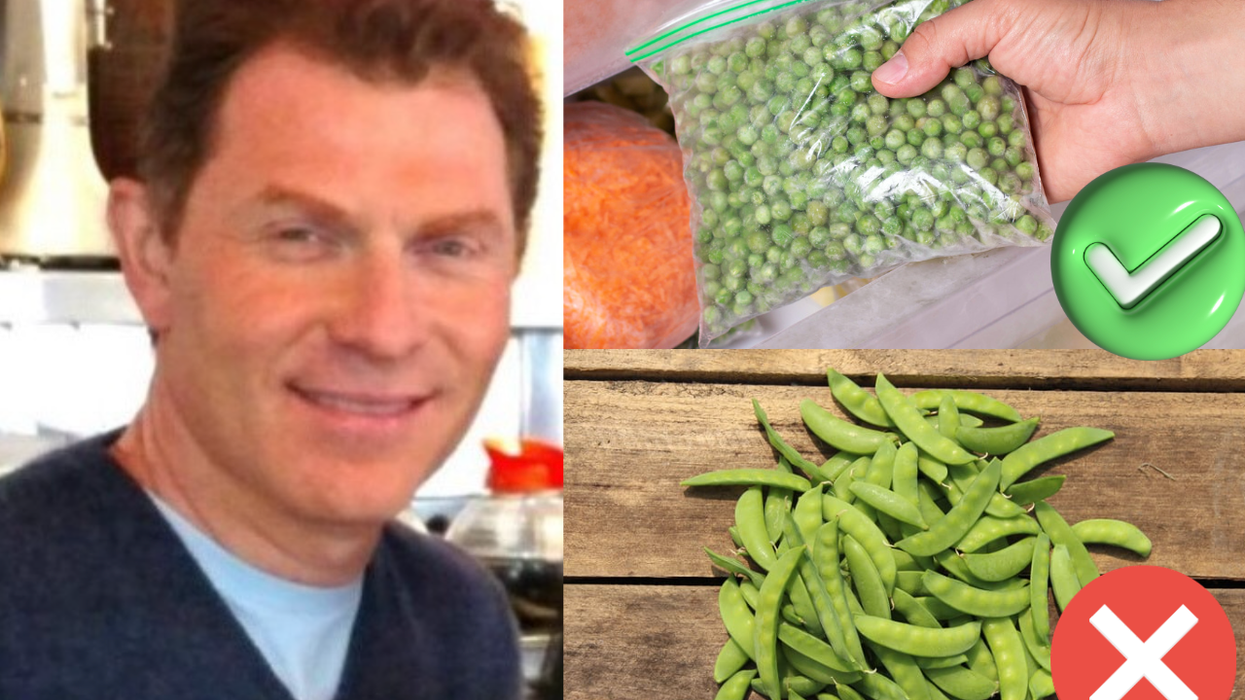Every Feb. 5, Nutella aficionados worldwide take to social media to celebrate World Nutella Day, composing songs, hosting parties and posting pictures of the sinfully sumptuous hazelnut and chocolate spread on everything from pancakes to pizzas to pastries.
This year’s event was particularly notable, as the “Nutella riots” had surprised the world just 11 days earlier. A French grocery chain slashed Nutella prices by 70%, leading to brawls, injuries, and an “orgy” of shopping madness. The uproar was so extreme that the French government began an investigation to see if consumer laws for discounting merchandise had been broken.
It was all for a spread that’s more palm oil and sugar than hazelnut (13%) and chocolate (7%) — but nonetheless saw astounding global sales of $2.46 billion in 2013. 180 million kilograms of Nutella are manufactured annually, hogging a quarter of the world’s entire hazelnut supply. In fact, Nutella has made its owners — the Ferrero family — so wealthy they recently bought Nestle; they claim to manufacture the same number of Tic Tacs in four years as stars in the Milky Way galaxy.
The meteoric rise of Nutella, and the devotion it inspires, is even more fascinating when one considers that this decadent chocolate-nut butter is actually a direct result of wartime shortages and rationing. Nutella was inspired by a confectioner’s compromise called “gianduja,” invented in Turin, Italy, in the early 1800s when there was a shortage of cocoa due to restrictions imposed by Napoleon.
During World War II, when cocoa was once again in short supply, a pastry maker named Pietro Ferrero improved on the recipe, using the abundant supply of prized, local hazelnut paste. According to Nutella, the blend was made in solid loaves wrapped in tinfoil, to be sliced and smeared on bread — and was about 2/3 hazelnut paste and 20% cocoa. Ferrero’s son Michele tinkered once again with the recipe, turned it into a cream, packaged it in a jar, and named it “Nutella.” He became so wealthy he commuted by helicopter every day from his Monte Carlo villa to Alba in northwest Italy. Today the company is the third-largest confectioner in the world.
The Replacements
If necessity is the mother of invention, then the scarcity of wartime rationing is the mother of many food fads we carry with us to this day. Nutella is only one among them. Here in the U.S., rationing of gasoline and sugar began in 1942, followed by meat, butter, cheese, and canned goods. Recipes of the day stretched items like butter by adding milk, salt, and gelatin to produce more.
Spam, of course, is probably the most famous wartime food. Invented in Minnesota in 1937 by Jay Hormel, who wanted a convenient canned meat, Spam spread across the globe in the rations of soldiers during World War II. The military purchased more than 150 million pounds of Spam, although Hormel received hate mail from soldiers who couldn’t stand the stuff.
Today the once-maligned mush of pork, ham, salt, and sugar is so popular that nearly 13 cans of Spam are eaten every second. Spam musubi, which is fried spam on rice wrapped in seaweed, is wildly popular in Hawaii, where residents consume more Spam than any other place in the world — a total of 4 million cans a year.
Instant ramen, which has fed and nourished thousands of displaced citizens after natural disasters like tsunamis, is another invention born of war shortages. After the war, Momofuku Ando, the president of a failed bank, saw people huddled outside a makeshift ramen stall behind a bombed train station. Food shortages still plagued Japan, so Momofuku decided that a mass-produced instant noodle soup was one answer. He wouldn’t get the recipe right until the late 1950s, though, when he happened to toss noodles into tempura oil his wife had heated for dinner. Frying the noodles in oil dehydrated them and created perforations that made them cook quickly. Instant ramen was born.
Later, when traveling in the U.S. and watching people break up the packs of ramen and pour them into cups, he was inspired to invent the Instant Noodle Cup. The World Instant Noodles Association estimates 97 billion packages of instant ramen were sold globally in 2016. Cup Noodles are now available in more than 80 countries. In the year 2000, Japan chose instant ramen as their greatest invention of the 20th Century.
Twinkies have a similar origin. Hostess made a yellow sponge cake stuffed with bananas, but when wartime bananas were scarce, the cakes were filled with a cheap cream filling. Sales exploded and the U.S. embraced the resulting confection. When Hostess closed its factories in 2012 and Twinkie lovers worried they would go extinct, boxes of Twinkies and related paraphernalia sold for astounding prices on eBay. One seller posted a box of Twinkies for $21 million. But Twinkies was too popular to die a final death — Hostess was bought by a billionaire and in 2015 was making a million Twinkies a day.
Then there’s the cache of popular recipes crafted from missing ingredients during both World Wars. Many of them are “mock” recipes — also called camouflage cookery. Mock turtle soup uses a calf’s head instead of turtles. Mock apple pie, which Nabisco claims to have invented during WWII when apples were scarce, is made with Ritz crackers. It actually tastes much like apple pie, due to a bit of creative kitchen chemistry, making use of cream of tartar to add a tart, fruity taste. Other ingredients include boiling hot lemon-flavored sugar syrup, water, cinnamon, and butter.
Animal Instincts
The astounding global success of inventions like Nutella, instant ramen, Spam, and Twinkies suggests that in paring life — and food — down to necessities, we arrive at something essential in our biology and our souls. Our genes and tastebuds were long ago tweaked in favor of sugar, salt, and fat, in order to survive times of famine or scarcity.
These wildly popular necessities-of-invention call irresistibly to our hardwired need for calorie-dense food. When hundreds of people line up at 8 a.m. for discounted Nutella or actually hit and shove each other as they rush for the jars, they’re fighting for much more than the chocolate hazelnut spread. They’re fighting for life itself. It’s as if their slumbering ancestors — those who had to survive on African savannahs and chase prey for hours or gorge on ripe fruit whenever they found it — are suddenly awakened. These soft, gooey foods also play to our sensory pleasure: The mouthfeel of cream, mush, or slurpy noodles is pure comfort.
And finally, these high-fat or high-carb treats often speak to our childhood selves. I remember sitting outside with friends in grade school, laying my Hershey’s Kisses or milk chocolate on the ground until they melted, then unwrapping them and licking them onto my tongue. They tasted so much better that way.
In France, children spread Nutella on baguettes for breakfast. The Twinkie, too, has long “represented the summit of the pastry maker’s art,” opined the New York Times in 2012, “for untold millions of American children seduced by its loaf-shaped golden sponge cake, soft yet springy, and voluptuous vanilla cream filling.”
Michele Ferraro, the inventor of Nutella, must have understood that nexus of childhood and hardwired biology, of taste and nostalgia that pulls at us over a lifetime. After he invented the treat, Italian food stores started a tradition called “The Smearing.” Children would trot off to their local grocery with a slice of bread and hold it out expectantly for a “smear” of the creamy confection.
Oh, sweet junk food, your siren song follows us our whole lives long.














